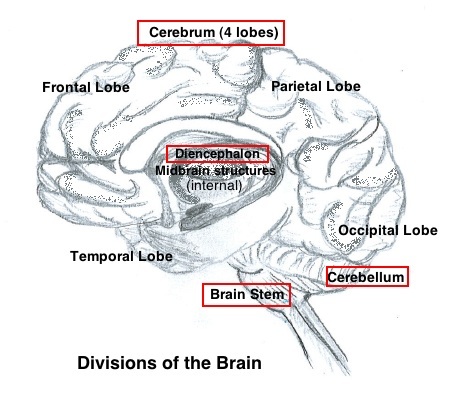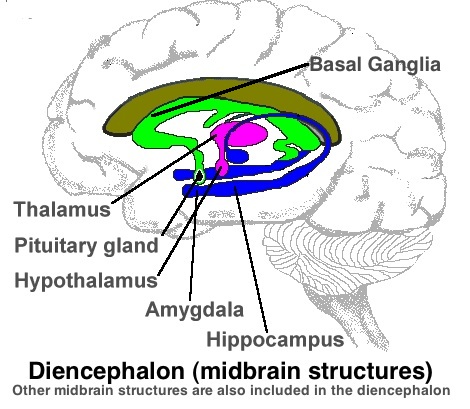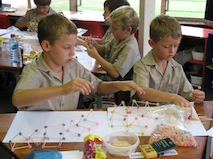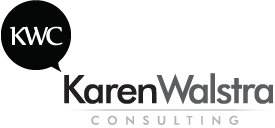Movement and Learning Our bodies are built to move, yet often our teaching strategies still insist on children sitting for long periods of time during the school day.
Many schools are reducing the number of PE lessons per week, shortening breaks or reducing physical activities within school as they are not seen as 'core business'. Recent neurological studies show the importance and relationship between movement and learning.
Thinking and learning is improved by physical aerobic movement, as quick adrenalin and noradrenalin responses are initiated, which are critical when dealing with challenges (Jensen, 2004)

The cerebellum is part of the brain that is most associated with balance, posture and movement. It is only 10percent of the brain size, but contains about half of the brains' neurons. The cerebellum processes most of our learning.
From very young we need to process and analyse information, then predict movements before actually moving. We do this to control the movement better. This ability is linked to quick decisions that are made by making predictions, practicing, ordering and sequencing. The cerebellum makes predictive decisions related to movement and to mentally rehearsed sequences. Therefore movement and learning are strongly linked. This process of thinking before doing demonstrates all the sensory connections involved with the cerebellum to achieve the result. The cerebellum is the link to "how we move and think" (Jensen, 2008)

The basal ganglia(a group of parts in the brain) controls the initiation of movements, posture, balance and even eye movement. These components are linked to the other motor areas in the brain, such as linking the thalamus with the motor cortex. The basal ganglia are also involved in cognitive and emotional behaviours. They play an important role in reward and reinforcement (reward systems), movement regulation, skill learning and habit formation.
The thalamus receives the input from our senses and directs it to the appropriate part of the cerebral cortex. The frontal lobes are part of the cerebral cortex, they are the part of the brain does the 'higher' cognitive functions. They contain substructures such as the prefrontal cortex, orbitofrontal cortex, motor cortex, premotor cortex, and broca's area. These substructures are involved in attention, thought, voluntary movement, decision-making and language (Healey, 2004). The motor cortex is involved in planning, control and execution of voluntary movements.
Lyelle Palmer, 2003, showed in a 20 year study that early motor stimulation leads to better learning and academic success; including enhanced attention, listening skills, reading scores and writing skills. Our motor sensory systems, especially auditory, visual and motor systems are developed through exploration in the first two years of life. Our vestibular system (system in inner ear that controls our sense of balance and movement) strongly influences the other sensory systems. (Healey, 2004). Sensorimotor integration is fundamental to school readiness. These activities should include spinning, crawling, rolling, tumbling, rocking, matching, pointing and fine-motor activities. These types of activities could be included in many lessons, such as drama, dance and physical education.
Some of the benefits of movement and exercise related to the brain are:
- Movement and exercise provides more oxygen and nutrients to the brain as is enhances circulation
- Repetitive gross motor movements could activate the production dopamine. Dopamine is a mood-enhancing neurotransmitter and neurohormone, that is produced in several areas of the brain and released by the hypothalamus.(Mandal, 2013 online) Dophamine makes us feel good, happy, is good for our working memory and improves long term memory. Emrah Düzel, neuroscientist at the German Center for Neurodegenerative Diseases (DZNE) and the University of Magdeburg found an improvement in long term memory in senior citizens during research with regards to dopamine. (Science News, Nov. 2012 online)
- Adequate movement or exercise encourages new cell production in the brain, as well as prolonging the survival of existing brain cells.
- Movement may initiate the production of the nerve growth factor, a hormone which enhances brain function
- Movement also triggers release of neurotrophins. Neurotrophins enhance growth, impact mood, cement memory and enhance connections between neurons.

Movement enhances learning and memory. Teachers who used movement, in various forms, such as drama, games and PE saw an improvement in learners remembering and learning new information.
Eric Jensen suggests that physical education, as it's aerobic exercise, at school builds brain cells, that there is no other data to show that any other subject shows that!
Don't be afraid of introducing movement activities into your lessons, plan and prepare your lessons carefully to include different forms of movement to suit the subject being taught.
If you're wary, begin with simpler types of movement activities and observe the results. You should experience the children remaining more engaged and involved in the lessons
For example:
- Allow learners to move around or stretch during a lesson if they feel they are lacking concentration or feeling lethargic, without distracting others from their work.
- Stretching and marching type movements could help learners refocus on their work. These activities you could also get the class to do as whole, as part of the lesson, perhaps after an introduction before the written work is begun.
- Cross-lateral exercises, such as knee-lifts with opposite hands and knees touching while marching motion or cross-crawl where the midline is crossed, stimulates both sides of the brain and stimulates thinking processes.
Movement can be included in all subjects throughout the school day, for both primary and high school learners.

Possible ideas for primary school:
Hop-scotch - draw a hop-scotch pattern on the floor either in the classroom or on the corridor outside the classroom. This pattern can be used for different subjects.
- Hop-scotch for mathematics, maths problems, times or division tables or something similar could be put into the various blocks, which need to be verbally answered before a child progresses. After completing hopscotch. The child removes the calculation cards and places different ones on for the next child. Children could do this in groups of 3 or 4 children.
- Hop-scotch for languages, words could be placed on the hopscotch shapes, and the children would have to read the words as they hop on them. The words can be swapped around or new words replaced for the next children to read. Or as they step on word the child: read it, sound it., say.
Classroom stepping stones, use in a similar manner to hop-scotch, create a set of stepping stones between the desks or in the reading corner of the classroom. Questions, could be placed next to the stepping stones for children to answer as they hop along the stones.
Toss a bean bag:
- One child asks the timetable as they toss the beanbag, the child catching the bag must answer the question. If correct they get t ask and toss. If incorrect, the bag gets given back to the original thrower. The children should not go out, but the game should be continued to play including all the children for a given time limit, rather than excluding children
- Teacher in middle throwing the bean-bag to the children individually and they must answer to Maths problem
- A ball could be used instead of bean-bag, this activity could also be done outside of the classroom, in a quad or on a field. Instead of a whole class, the children could be divided into many small groups f 5 or 6 children, each playing the same game, which means the children would each be given more opportunities to be active participants.
Jumping jacks, froggy / rabbit jumps, jumping on one leg, skipping (with or without a rope):
The children could be asked to say their timetables or to sound out words while doing jumps of various descriptions. Consider the space available for the type of jumps you want to the children to do. Keep the atmosphere in the room, fun and light-hearted while the children are jumping and answering. The whole class could do this at the same time, or children could do it one a t a time. Or small groups of children could take turns moving from on child to the next in a clock-wie manner, calling out the problem or word and they other children in the group would follow the instruction
Sign language:
- Sign language is wonderful to teach the children, these small movements could be used as a method of communicating in your lessons.
- Children could answer mental maths questions or spell given words using sign language
Dominoes:
- Maths dominoes, make dominos cards with timetables and answers.
- Phonics dominoes, a sound and a word on the two halves of each domino.
Rhymes and games with hand and body movements
- Incy-wincy spider
- Who put the cookie in the cookie jar
- Farmers in the dell
- Other finger and clapping and movement rhymes

Other Maths ideas
- Maths activities on the floor (measurement or geometric shape construction)
Other Language ideas
- Write on my back: In pairs children write word or draw picture or letter on other person's back. Try to identify what was written
- Poetry and rhymes with movement

Social sciences (geography & history)
- Scavenger hunt around the school, perhaps to find information about the school's history or information the teacher has hidden about a topic.
- Directional search, using a compass or GPS coordinates to find information
- Role play of an historical happening
Natural science

- Do actual hands-on experiments, working with equipment.
- Nature study tasks, outdoors
- Field trips or day outings, where the learners are doing hands-on activities
Everyday movement tasks could include
- Promote children moving around class when they want to, without disturbing others
- Have gym balls as an option for children to sit on instead of chairs in the class.
- Perhaps have movement included in the welcome - a jump or stretch (keep it light-hearted and fun!)
- Unusual entrance - "Spider-web door", put a rope spider web in a wooden frame that fits the classroom door, children to climb through on entering the room.
- Activity area, children can play the games when they have finished the given tasks.
- Collaborative learning activities where children work together.
Break time games and movement
- Elastic jumping, working in teams or small groups.
- Stocking and ball (play tennis ball in toe of stocking). Child stands against a wall, and does a series of movements swinging the stocking ballin a series of sequenced movements.
- Skipping, individually or in groups
- Hide-and-seek
- Four square
Get the children moving as part of everyday teaching, and see the improved results. Movement improves our ability to learn and remember. Eric Jensen suggests that exercise is one of the best things you can do for your brain.
References:
Healey, J.M. (2004) Your Child's Growing Mind. Brain Development and Learning from Birth to Adolescence. 3rd ed. Broadway Books, Random House, Inc. {Kindle addition}
Jensen, E. (2008) Brain-Based learning - the new paradigm of teaching 2nd ed. Corwin Press, California {Kindle addition}
Jensen, E. (2005) Teaching with the brain in Mind. 2nd ed. ASCD Association for Supervision and Curriculum Development. Alexandria, Virginia USA. {Kindle addition}
Mandal. A (MD) . (8 July 2013 online). News Medical. What is Dopamine? Retrieved from http://www.news-medical.net/health/What-is-Dopamine.aspx
Science news. (November 8, 2012 online) Feel-Good Hormone Helps Jog Memory, Finds Study of Seniors. Science Daily. Retrieved July 2013 http://www.sciencedaily.com/releases/2012/11/121108131720.htm
Further Reading:






